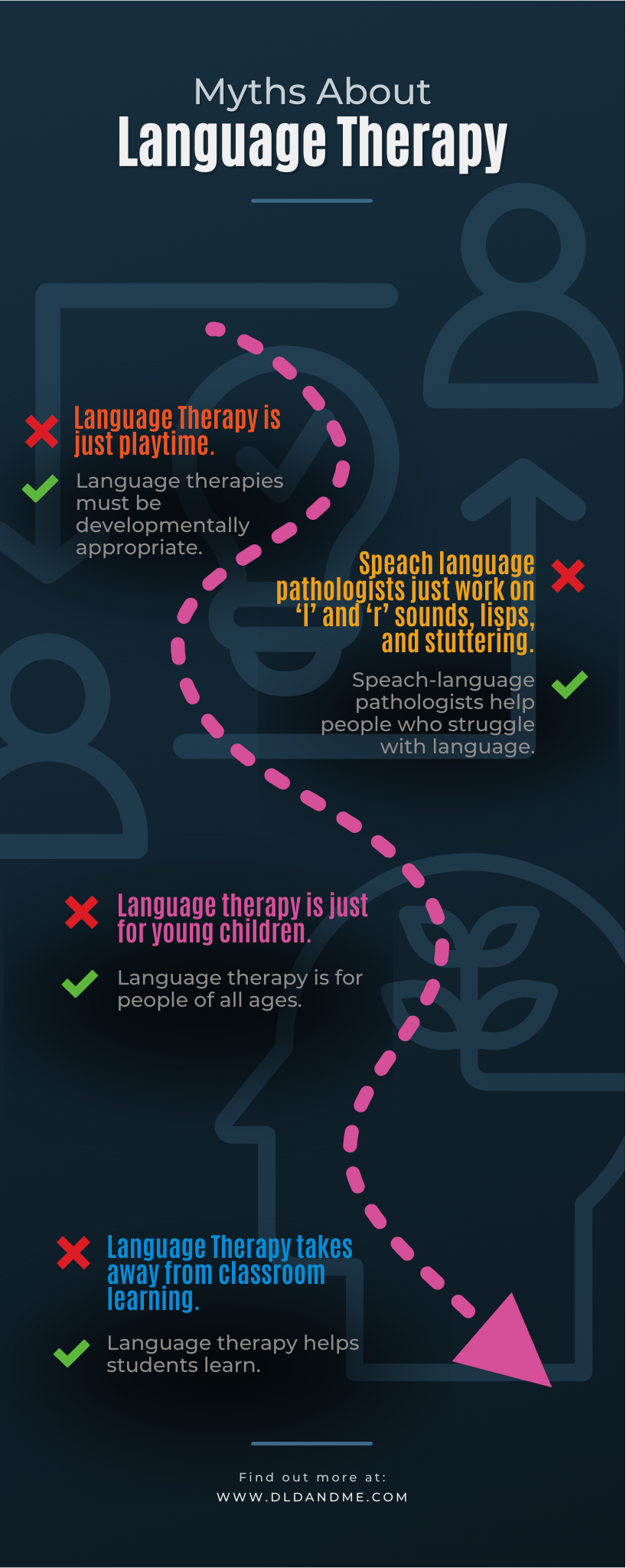Myths About Language Therapy
Incorrect Ideas About Language Therapy
Myths, misunderstandings, and half-truths about language therapy can make it difficult for people who struggle to get the help they need. Let's set the record straight!
MYTH: Speech-language pathologists just work on l and r sounds, lisps, and stuttering.
TRUTH: Speech-language pathologists help people who struggle with language.
Speech-language pathologists do help people with these speech problems, but they also help people to understand and use vocabulary and grammar and other aspects of communication affected by DLD.
MYTH: Language therapy is just playtime.
TRUTH: Language therapies must be developmentally appropriate.
For very young children, most speech-language pathologists prefer a naturalistic approach. They fit therapeutic activities into what children do naturally: play! All children learn from the exploration and problem-solving involved in play. Play-based therapies maximize these learning opportunities. What looks like play is actually carefully crafted, goal-focused teaching. For older children, language therapy often occurs during ongoing classroom activities. This, too, is consistent with the natural activities of the child at that age.
MYTH: Language therapy is just for young children.
TRUTH: Language therapy is for people of all ages.
It is true that early interventions, those taking place in the first three years of life, take advantage of an optimal window for learning. However, learning and development never stop. A person with DLD can benefit from language therapy as a toddler, a preschooler, and an elementary, secondary, or college student. Even adults who have completed their education can benefit. Unfortunately, in the U.S., services are often phased out in middle school and beyond. College students should consider seeking ADA accommodations. Speech-language pathologists based in private practice or hospital settings offer services to people of all ages.
MYTH: Language therapy takes away from classroom learning.
TRUTH: Language therapy helps students learn.
In schools, children sometimes leave the classroom to receive language therapy. This is called a pull-out model. Naturally, the child will miss what is being taught at that moment. The important thing to consider is whether the child could learn what is being taught at that moment without the special help that he is receiving from the school speech-language pathologist. Teachers teach by talking or reading to their students. The child with DLD will not be able to fully benefit from the lesson if he isn't given supports to help him understand and use the language of the lesson. Fortunately, speech-language pathologists set goals for an individual child based on what is being taught in his classroom and what skills the child needs in order to learn in that classroom. It is also true that pull-out models are rarer than ever before. Now many speech-language pathologists "push in." They are in the classroom working with children as they are completing classroom lessons.




